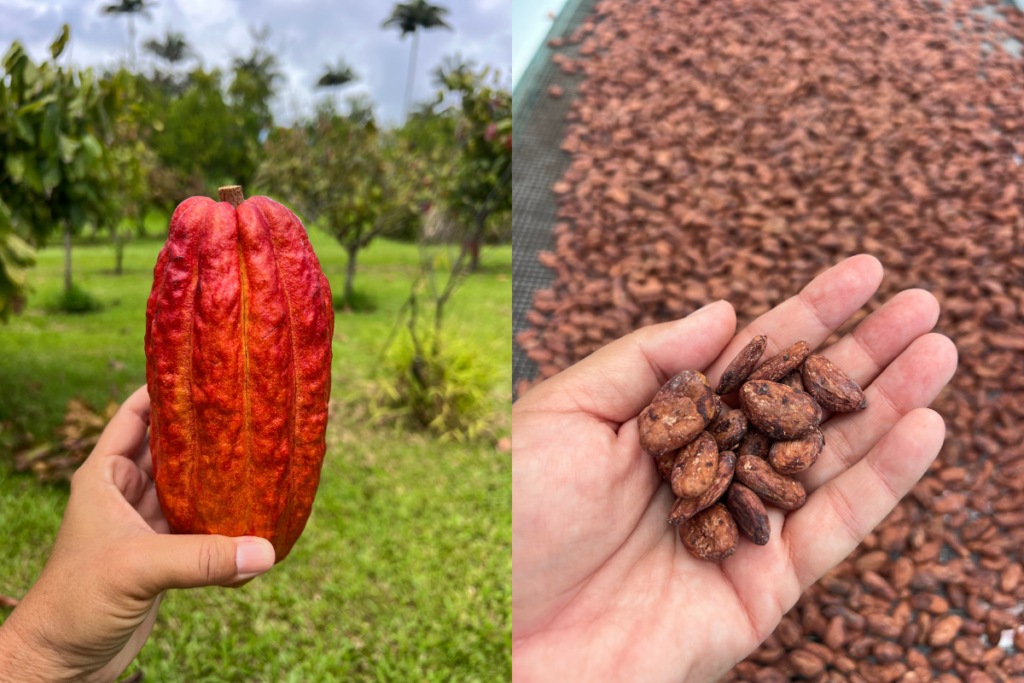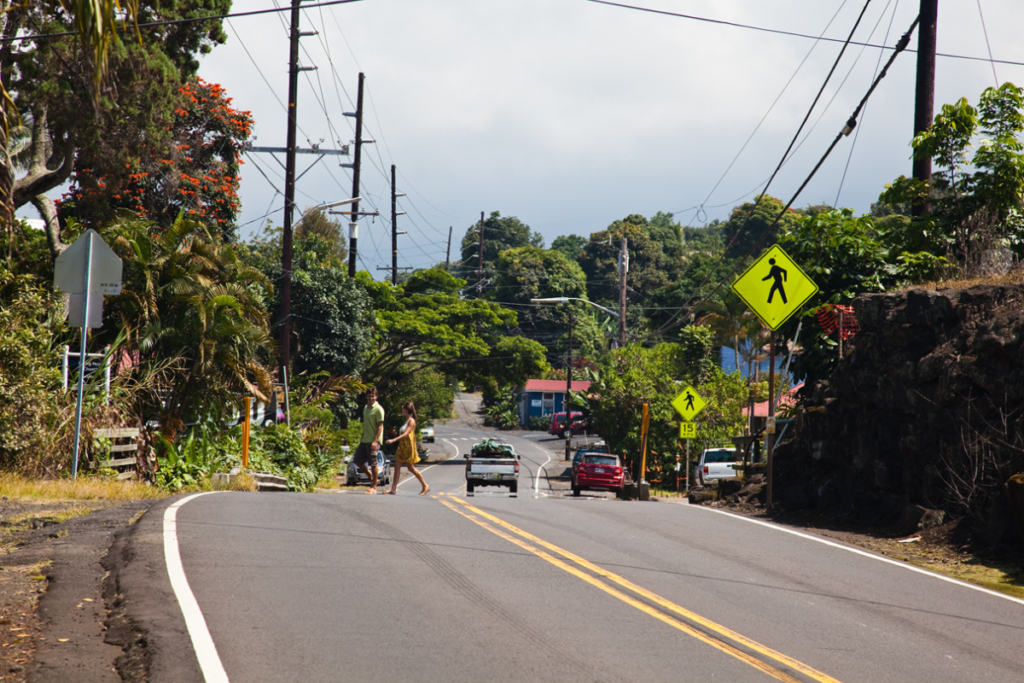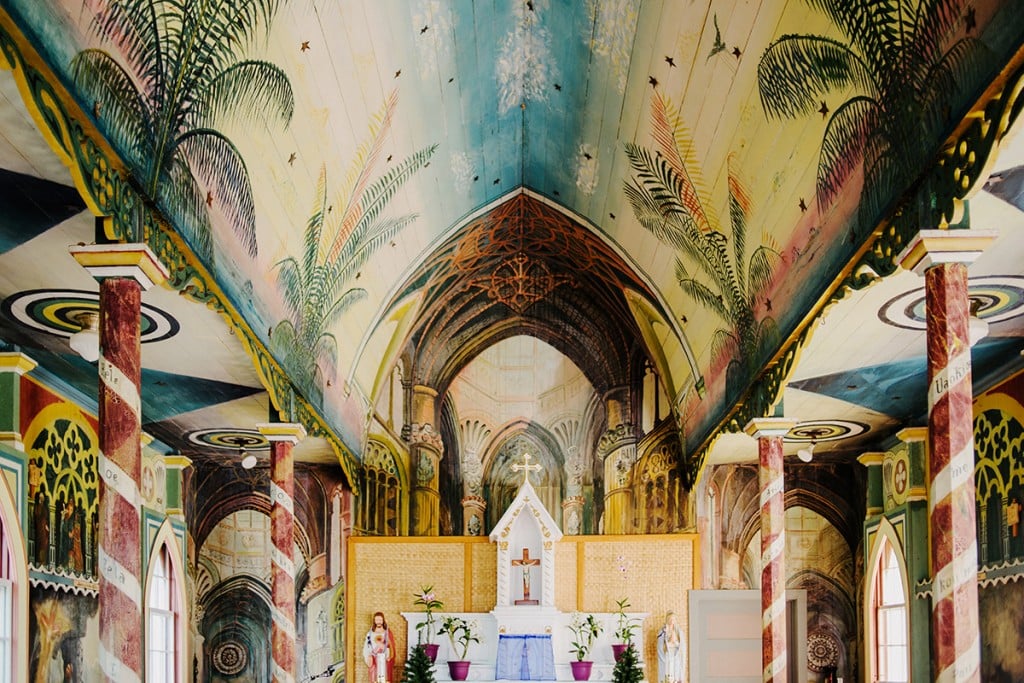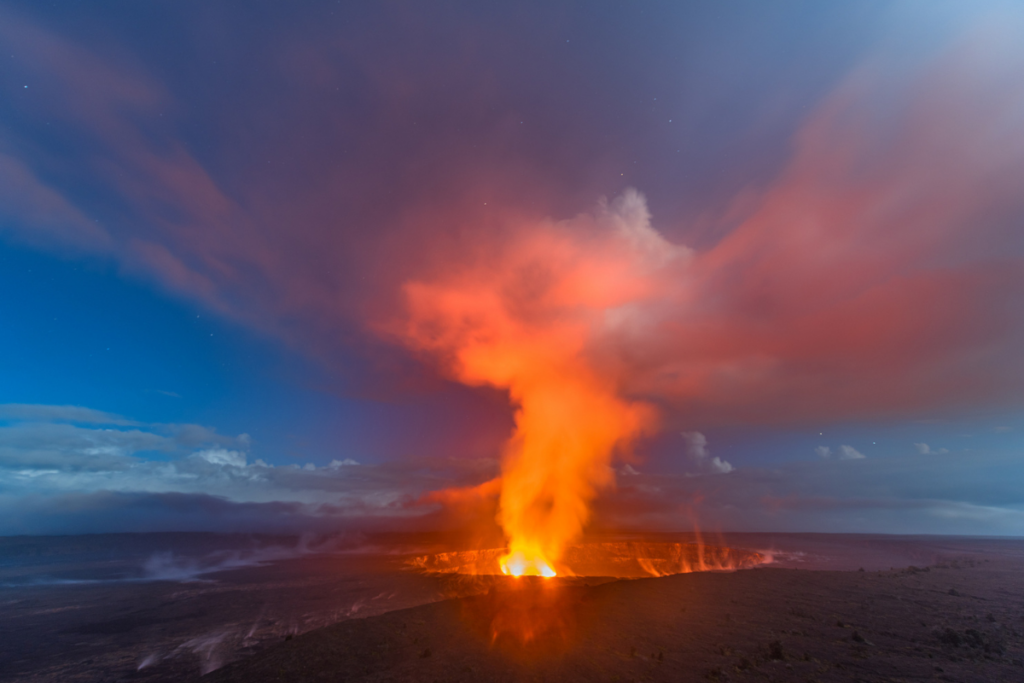This Award-Winning Family-Run Farm Is a Sweet Stop on the Hāmākua Coast
Take a tour of Mauna Kea Cacao on Hawaiʻi Island to learn how the crop that begets chocolate is cultivated.

With year-round sunshine and a warm, tropical climate, it’s no surprise the Hawaiian Islands are a top travel destination. These conditions also make the Islands a great place to grow a variety of crops—including some that can’t be grown anywhere else in the U.S.
Hawaiʻi is the only state in the country where cacao—the plant that chocolate derives from—can be farmed and processed commercially. And in recent years, it’s become more common for Island farms to cultivate the crop.
READ MORE: How Hawaiʻi Cacao is Making the World Sweeter
“It’s really gratifying to be a part of something growing,” says Susan Basset, who started Mauna Kea Cacao on Hawaiʻi Island with her husband, John Basset.
In 2011, the Bassets bought 20 acres of agricultural land in Pepeʻekeo, about 15 minutes from downtown Hilo. The couple—both engineers at the time—were planting seeds for their retirement.
Twice a year, the couple used their vacation time to travel from Colorado to the Big Island to plant cacao seedlings. By the time they settled in Pepeʻekeo in 2015, they had 1,000 trees growing—today they have about 1,400. Through trial and error and working with other farmers, they learned everything they needed to know about the trees and the beans they produce. Their hard work paid off and by 2018, the farm had earned the Best Cacao award at the Big Island Chocolate Festival.

Susan Basset started Mauna Kea Cacao on Hawaiʻi Island with her husband, John Basset.
Photo: Grace Maeda
As someone with a sweet tooth, I’m always eager to sample different chocolates made with cacao grown in Hawaiʻi. Whenever I’m in a grocery store or at a local market, I usually purchase a bar (or two) of locally sourced chocolate. But I’m even more excited when I can explore a farm that grows the sweet crop.
Tucked on the Hāmākua Coast, Mauna Kea Cacao offers 90-minute tours, providing an insightful window into how cacao is grown, harvested and fermented, and how its beans are dried and roasted.
READ MORE: 5 Must-See Cacao Farms on Hawaiʻi Island
Walking through rows of cacao trees, Basset tells me and our small tour group that cacao grown in Hawaiʻi has a unique flavor profile because of the Islands’ volcanic soil and microclimates. Even across the Islands, cacao flavors will differ. Here on the rainy east side of the Big Island the farm receives twice as much water as cacao plants typically need.

You can crack open a cacao pod with a giant nutcracker contraption the Bassets designed themselves.
Photo: Grace Maeda
Dealing with those wet conditions—and other obstacles, like pests—is the job of a welcoming network of cacao farmers who discuss problems and possible solutions.
Among the orchard of cacao trees, I cut my own ripe cacao pod before moving to a pavilion with the rest of our tour group. Here, guests crack open pods with a giant nutcracker contraption the Bassets designed themselves. And we learn about the fermentation phase of cacao processing and how the beans inside the pods need to be dried.
Of course, sampling cacao nibs and chocolate, is my favorite part of the tour.
Basset first provides samples of cacao nibs for us to try. The small pieces of crushed cacao beans are chocolate in its pure form. To me, it tastes a little nutty, slightly bitter even. Basset tells us how we can roast cacao beans at home to make our own nibs.

Susan Basset’s untempered chocolate.
Photo: Grace Maeda
Although the Bassets don’t make their own chocolate for sale commercially, other companies use the couple’s cacao beans to make delicious chocolate bars. We sample pieces from Honokaʻa Chocolate, a local producer, along with Cincinnati-based Maverick Chocolate and LA-based Letter Press Chocolate (which closed in March). But my favorite is Basset’s homemade untempered chocolate. It just melts in your mouth.
As I leave the charming farm, I’m more excited than ever about Hawaiʻi’s growing cacao industry, and look forward to trying more one-of-a-kind chocolate made from cacao cultivated in local soil.
Farm tours are offered Tuesdays, Thursdays and Fridays at 10 a.m. and 1 p.m. Reservations are recommended and can be made at maunakeacacao.com.
Grace Maeda is the editor of HAWAIʻI Magazine.


